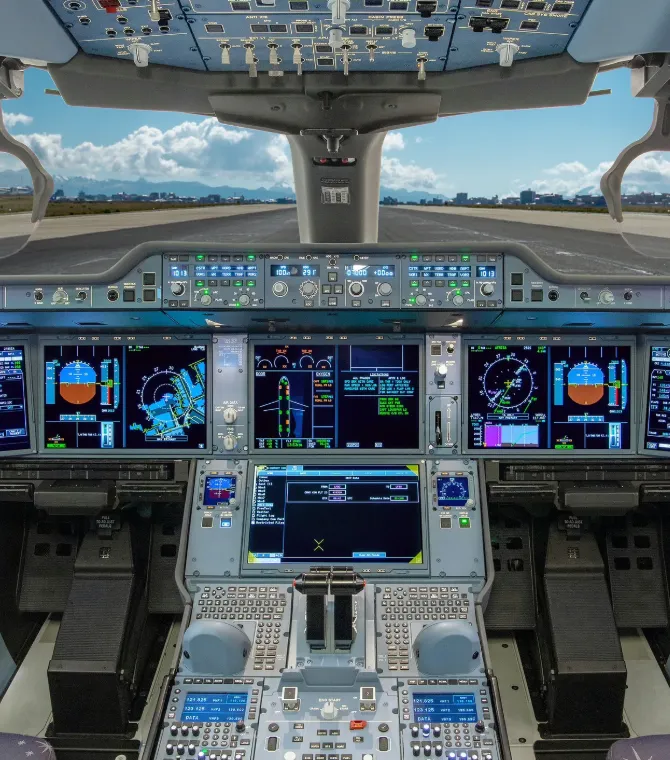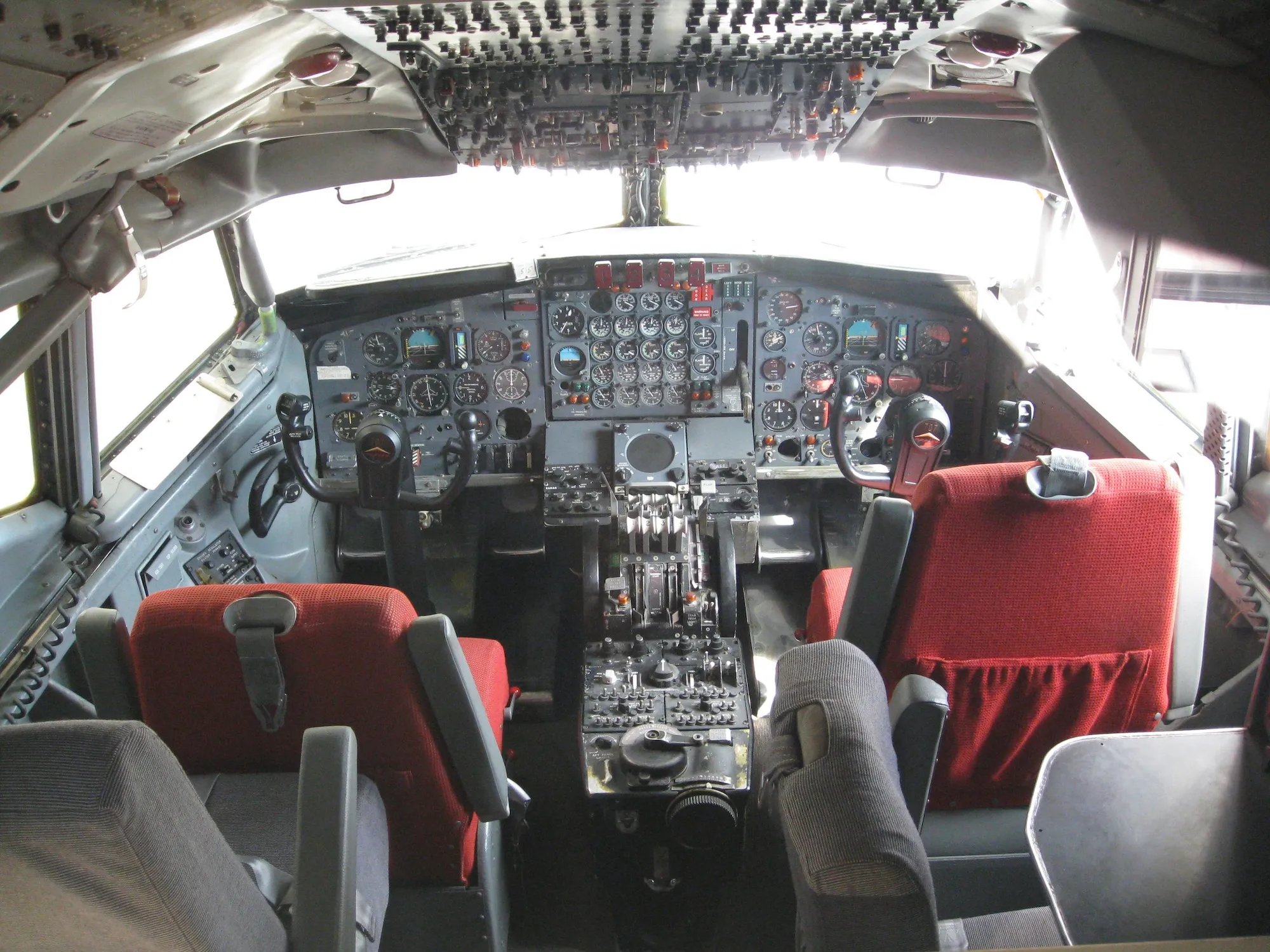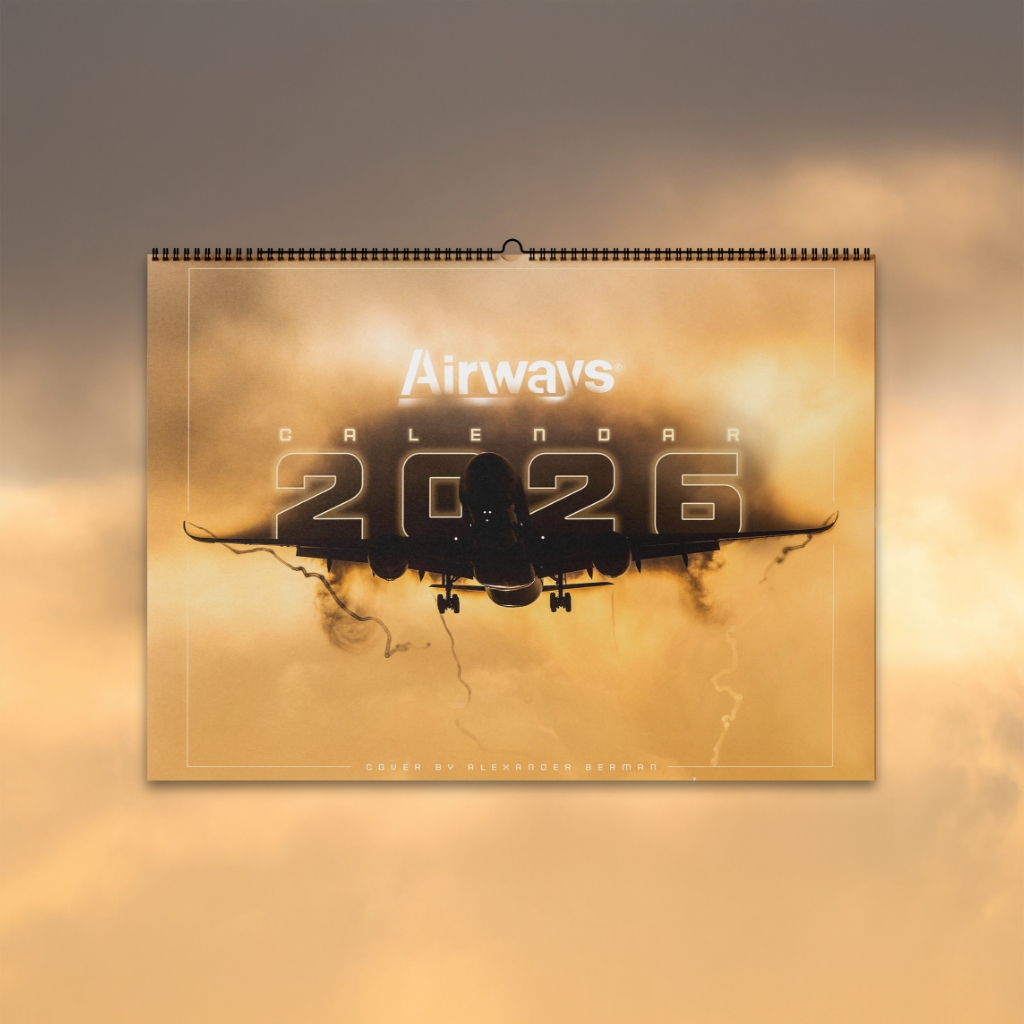DALLAS — The cockpit is the heart of the aircraft where pilots convert information into action to keep an aircraft successfully aloft.
Cockpit technology has undergone one of the most extraordinary revolutions in aviation history during the last century, evolving from analogue setups with a few rudimentary instruments to sophisticated digital "glass cockpits" that can simultaneously integrate, display, and track every conceivable parameter in real time.
The glass cockpit hasn't merely altered the way jets are flown; it has also redesigned the tasks of the flight crew, ergonomics, and safety standards.
Earliest Cockpits: Where the Controls of Flight Emerged
During the pioneer years of aviation, the cockpit hardly existed as we know it now. There was no glassed-in cockpit in the Wright brothers' Flyer; the pilot simply lay on the airframe, working the aircraft by levers and wires. As aircraft developed, the more conventional styles had seats, a windscreen, and a rudimentary instrument panel, making the first recognizable cockpit.
During the 1920s and 1930s, standard instrument panels became commonplace, ensuring pilots' safety even when they could no longer rely on visual clues. Such panels commonly featured an altimeter, airspeed, turn-and-bank indicator, as well as a magnetic compass.
Although they provided essential details, the early cockpit required a pilot to continuously check numerous small dials, a task that demanded very high concentration, especially during inclement weather.
This analog age provided the basis for the current practice of navigation and flight control. Cockpit instrumentation during the 1950s became increasingly complex so that aircraft could fly, even land, in marginal visibility, aided by radio assistance for navigation. It was the age of "steam gauges," hundreds of circular, electromechanical instruments crowding each panel face.

The Problem of Analog Overload
Airliners, up to the 1960s and the 1970s, were highly complex aircraft that required a three-person cockpit crew: a captain, a first officer, and a flight engineer. A typical cockpit of an airliner around this time had over 100 instruments and controls.
Each instrument was an independent presentation of data; airspeed, engine torque, hydraulic pressure, amount of fuel, and pilots had to study them continuously to build up a mental picture of the aircraft's condition. This created the so-called "cockpit workload problem," where pilots were being presented too much data, much of it in piecemeal fashion.
Under stress, this would unnecessarily complicate the prioritization of key data. Engineers then asked an intriguing question, “Could this data be presented more intuitively through the exploitation of technology?”.

First Step Toward Digitization: EFIS
This was achieved from the late 1970s to the early 1980s, with the advent of Electronic Flight Instrument Systems (EFIS). EFIS, as the name suggests, saw numerous conventional instruments go digital, initially through the use of cathode-ray tube (CRT) displays such as the very first personal computer monitors.
EFIS screens combined multiple parameters into a single, easy-to-understand interface. For instance, the Primary Flight Display (PFD) combined airspeed, altitude, attitude, and heading on a single screen, making it unnecessary to flip back and forth between separate dials.
The Navigation Display (ND) combined route and weather data on a single, dynamic display. This digital revolution improved situational awareness considerably. Pilots now obtained an accurate, combined picture of the flight situation with decreased eye movements. Workload was reduced, response time improved, and safety margins were increased.
The Glass Cockpit Revolution
The complete conversion to the glass cockpit as we know it today was introduced on aircraft such as the Boeing 757/767 and the Airbus A310 during the early 1980s. These aircraft introduced six or more large CRT screens, eliminating most electromechanical instruments and the need for a flight engineer.
A glass cockpit does more than just display digital flight data; it integrates the avionics, the flight management computers, the nav databases, and the warning systems into a standard display. Pilots use the Flight Management System (FMS) to plan, modify, and optimize routes. Graphically, the status of the system and the warnings enable the crew to diagnose and resolve issues quickly.
Most significant safety enhancements came with the introduction of glass cockpits. Terrain Awareness and Warning Systems (TAWS), weather radar overlays, and Traffic Collision Avoidance Systems (TCAS) are now displayed directly on the navigation display, thereby eliminating the risk of Controlled Flight Into Terrain (CFIT) or air collision.
Synthetic vision systems even create a computer-simulated 3D view of the local terrain, complementing pilots' spatial awareness even during instrument meteorological conditions (IMCs).

Ergonomics, Human-Machine Interface
The cockpit is not just about instrumentation but also about how humans interact with instrumentation. Cockpit ergonomics became a primary focus of development over the years. Organizations like SAE (Society for Automotive Engineers) issued recommended practices for cockpit arrangement, ensuring controls were easily accessible, all displays were visible, the seating position was optimal, and communication between people was straightforward.
Current cockpits are designed with the human-machine interface (HMI) in mind. Controls are effectively organized, displays are color-coded, and warning systems incorporate both visual and aural alerts to emphasize high-priority action. Careful design reduces human error and improves crew performance during high-workload periods like takeoff, landing, and abnormal conditions.
CRTs to LCDs and Beyond
At the end of the 1990s, LCD panels replaced bulkier, less reliable CRT screens, reducing weight and providing sharper images. High-resolution screens allow even more information to be seen, often with user-definable formats.
Other significant advances include touchscreen cockpit systems, which enable business jets and new-generation airliners, such as the Boeing 787 and Airbus A350, to feature touch-sensitive panels. These allow pilots to enter data and navigation inputs directly, similar to operating a tablet.
Head-Up Displays (HUDs) and even Head-Mounted Displays are becoming increasingly commonplace, projecting critical flight information directly into the pilot's field of view, so they need not take their eyes off externalities during crucial points of flight.
Advantages of Up-to-Date Glass Cock. The transition to glass cockpits from traditional cockpits experienced three significant benefits:
- Better Situational Awareness: Cockpit Displays provide a real-time, complete view of the flight situation, enabling pilots to recognize challenges better before they escalate into crisis proportions.
- Higher safety: Weather and terrain warning systems that not only announce call-outs but aid visually as well.
- Less work: More automation means less human-induced error. Flight plans, fuel control, systems, and numerous other functions are all managed by computer systems onboard the aircraft.
Future technologies include systems of complete gesture control, augmented reality overlays, and AI-based copilots to assist in decision-making. Pilots, while a necessary part of the loop, will continue to shift their role towards systems management and monitoring rather than direct control.

Conclusion
Cockpit development is a process of gradual improvement, guided by a search for additional flight safety, efficiency, and reduced pilot fatigue, from open cockpits to an array of lights, buttons, and switches.
Every step has been taken for the safety of the aircraft and the person flying. The modern cockpit is more than a set of gauges; it's an innovative, highly integrated system that seamlessly links pilots to their airplanes and their worlds.
As the world of aviation continues to advance, it's easy to imagine what the future cockpit technology might look like.




